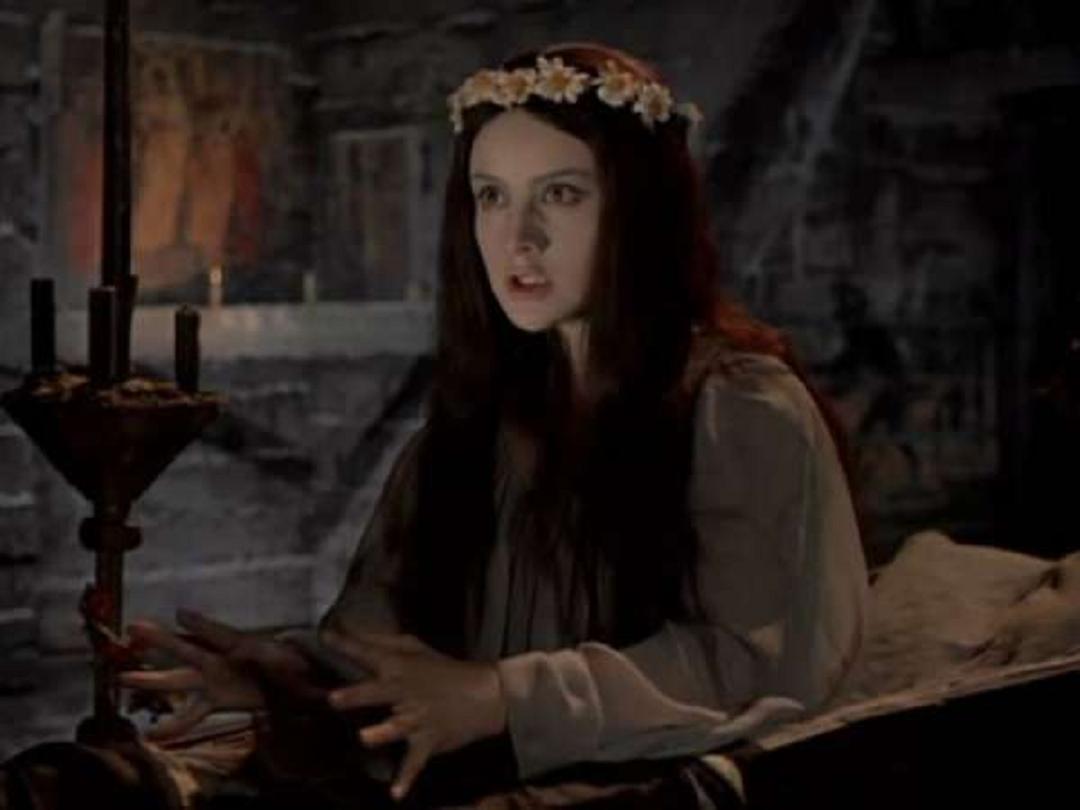A remake of “Viy” was released in 2014. (Photo courtesy of Mosfilm)
Hannah Manning
Connector Editor
It took 45 years for the Soviet Union to produce and release its first horror film, but the wait paid off. “Viy,” directed by Konstantin Ershov and Georgiy Kropachyov, is a film that dazzles with its practical effects and clever shots.
It centers around a monk named Khoma (Leonid Kuravlyov), who is summoned to pray over the body of a young woman, Pannochka (Natalya Varley). Upon seeing her corpse, Khoma realizes with a start that Pannochka is actually a witch that he had beaten to death a few days earlier. For three nights, Khoma is demonized by the undead body of the young woman and driven to bouts of insanity. Khoma’s only hope is to draw a sacred circle that keeps evil spirits out and make it until the cock crows in the morning. Then the witch must go back into her coffin and fall dead once more.
Alexander Ptushko served as the artistic director and special effects designer on “Viy,” and his penchant for storytelling through creative special effects shines throughout the film. A scene early on in the film has the witch (Nikolay Kutuzov) riding Khoma through the sky, and Ptushko sets up a fairly convincing green screen effect that gets the point across in a storybook way.
The aesthetic of the film mirrors something one would find in an old fairy tale, which adds to its allure and overall effectiveness as an adaption of a Ukrainian folktale. However, the appealing aesthetic that could only come with a film that old also brings in some serious limitations to the film.
A major factor in why Pannochka cannot just kill Khoma is that she is blind and cannot get to him easily. Without contacts to make her eyes appear milky white, it may be hard for viewers to pick up on that fact until later in the film. Knowing that fact explains her stumbling around in her first scene, grappling for Khoma, as well as a major plot point that occurs during the final night.
Another drawback is that the first scene with Pannochka does not happen until 40 minutes into the roughly 80-minute film. The audience has to weather scenes of Khoma getting drunk with old men he is riding with, which slows down the film considerably.
The strongest scenes in the film by far are the ones where Khoma is taunted by Pannochka. His fear at seeing Pannochka open her eyes and rise out of her coffin is palpable; Kuravlyov does an excellent job of showing terror without overacting. His fear is believable and almost never over the top.
Khoma desperately chanting prayers while Pannochka bangs at the barrier that he has drawn make the scenes at night that more claustrophobic and terrifying. The directors spin the camera around often, adding to the frenzied mood of the scenes.
On the second night in particular, Pannochka’s closed coffin rises up in the air and slams against the sacred circle that Khoma draws. It rears back and slams back into the barrier, again and again. The lid pops off and Pannochka stands fully upright and surfs the coffin around the room, swinging up to the barrier as if she were riding a pendulum. All the while, she moans Khoma’s name repeatedly, adding an uneasy menace. The scene is maddening and incredibly impressive given the time period during which it was shot.
The directors do well with switching from Pannochka’s perspective to Khoma’s perspective, contrasting her stony fury with his terror.
Varley delivers a powerful performance in each scene as Pannochka, going from utterly undead and blank to a hysterical frenzy. Covered in white face makeup, wearing a white nightgown and topped off with a flower crown, Varley is a beautiful sight to behold. Her acting prowess makes her that much more compelling to watch on screen. Varley’s best scene is her last, wherein Pannochka frenetically summons demons to taunt him.
This is where Ptushko conjures his magic. Utterly convincing demons crawl out of crevices in the church where Pannochka and Khoma standoff, their costume makeup done unbelievably well. A skeleton wobbles around. Another skeleton, that seems to be some kind of dinosaur, rattles around all six of its heads on six giraffe-like necks. A shot occurs where a background of hands circles around the terrified Khoma, who clutches at his podium and chants prayers.
Pannochka finally screams for Viy, the only one of the demons that can see, and the lesser demons shrink away in fear. Viy is a character that seems to be carved out of a hunk of rock, with a deep voice and long eyelids that must be peeled back so that he can see. The buildup to his arrival pays off in the way that he lumbers in and ultimately decides Khoma’s fate.
It is a very effective scene, and a marvel to watch nearly 50 years later. The film is a must-watch just for this scene alone.
Despite the time that it takes to move forward, “Viy” delivers a spectacle that must have surely horrified audiences at its release, and will at least intrigue modern viewers, leaving them to wonder how the cast and crew were able to manage it all.
Final grade: B



